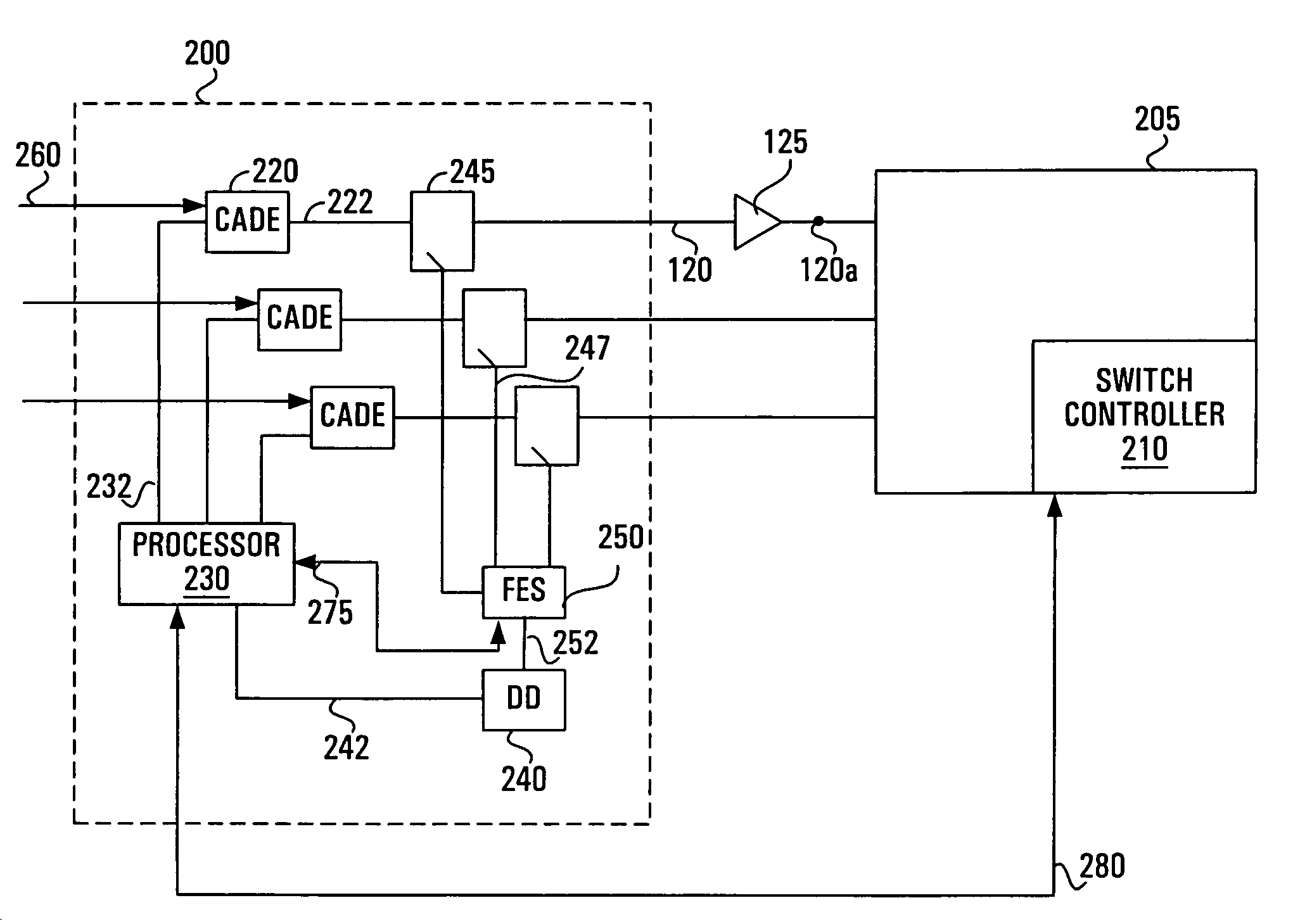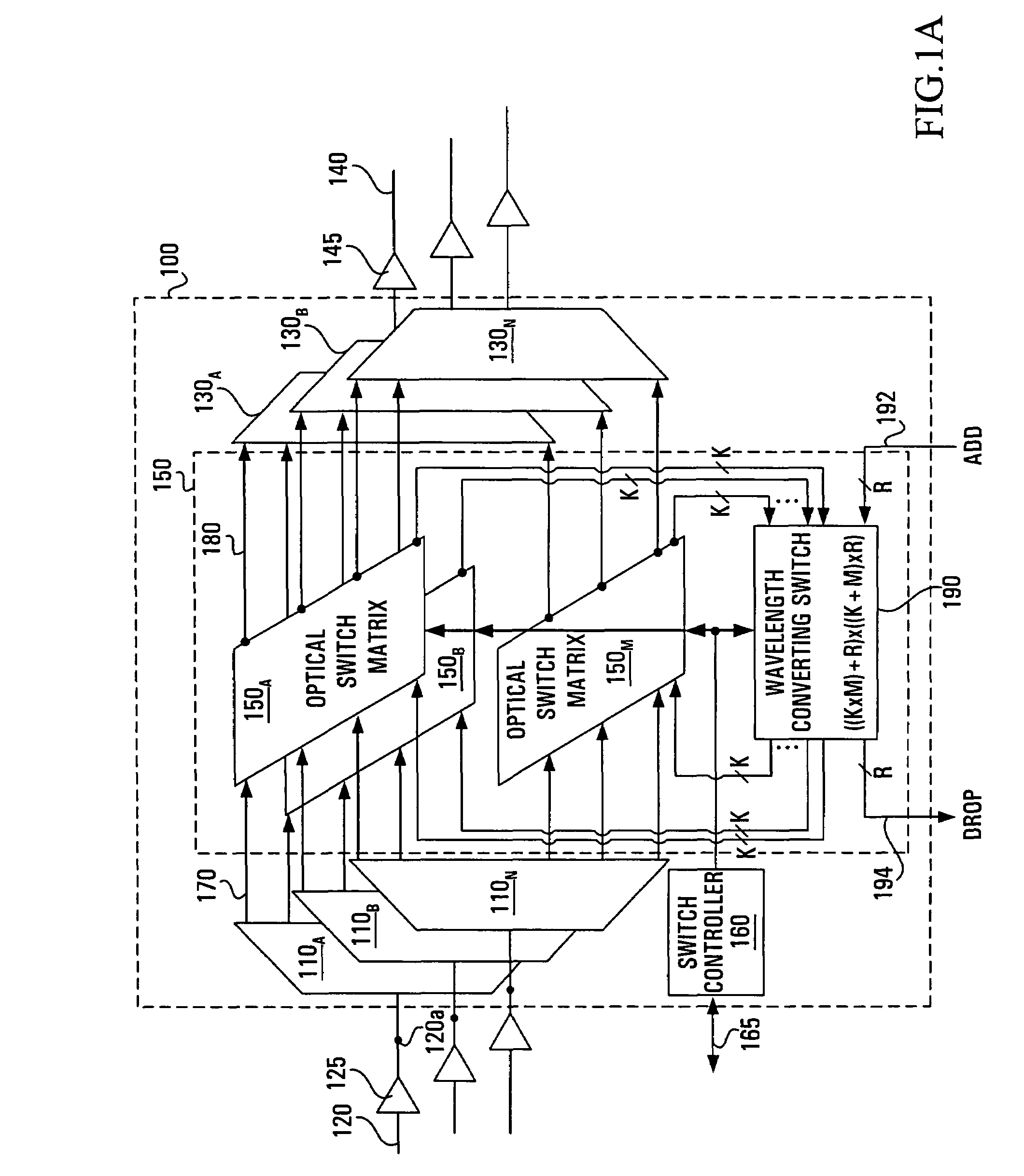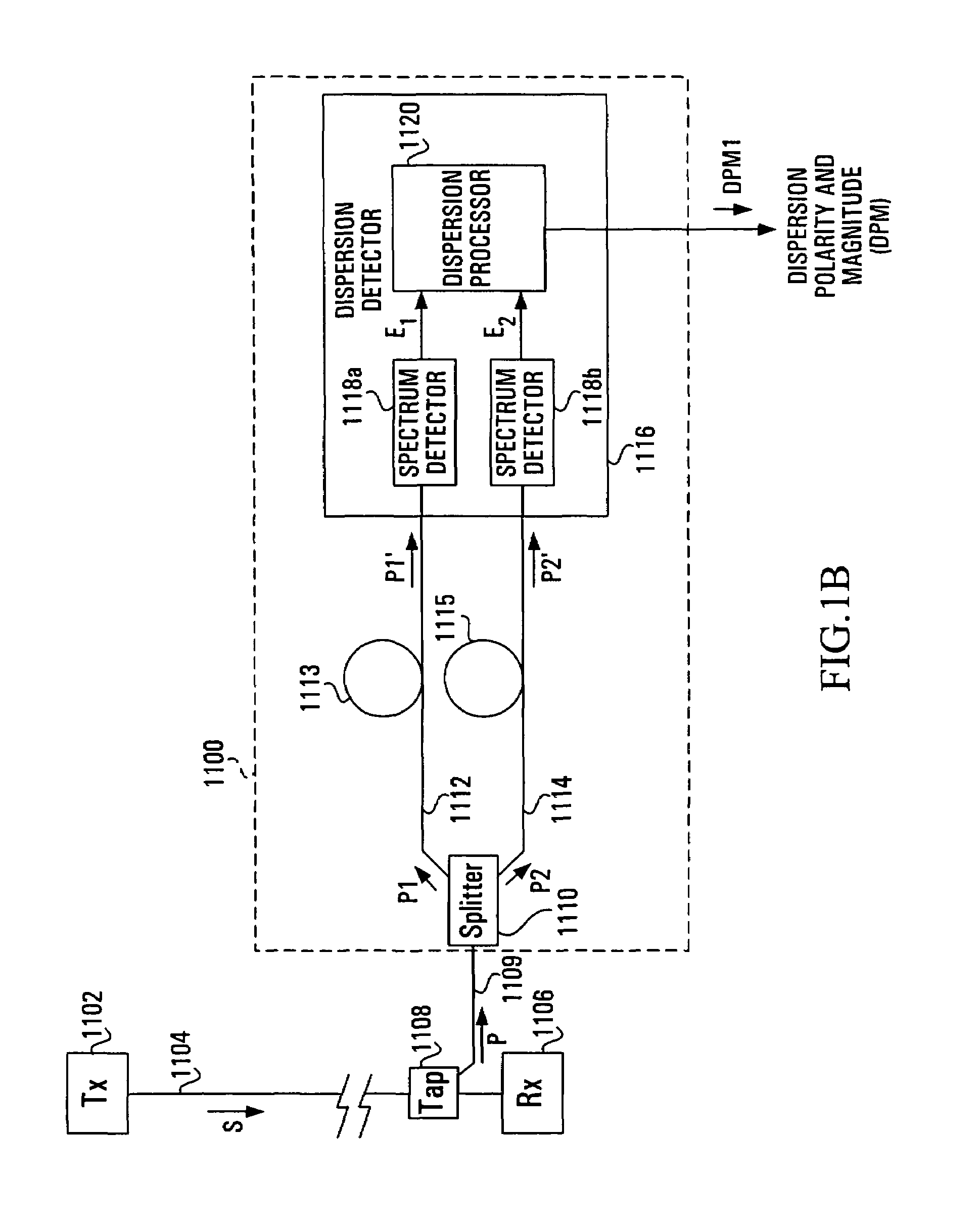Dispersion discrimination and compensation system and optical switch for use therewith
- Summary
- Abstract
- Description
- Claims
- Application Information
AI Technical Summary
Benefits of technology
Problems solved by technology
Method used
Image
Examples
Embodiment Construction
[0039]In a first embodiment, the present invention provides a Dispersion Discrimination and Compensation (DDC) subsystem that can be added to a photonic switch. By way of a non-limiting example, FIG. 1 shows a conventional switch that can be used in conjunction with the present invention. The conventional switch depicted in FIG. 1 will be briefly described. It is more fully described in above-referenced co-pending U.S. patent application Ser. No. 09 / 511,065.
[0040]The photonic switch 100 typically comprises N individual M-output wavelength division demultiplexing (WDD) devices 110A–110N, where each WDD device is associated with a respective one of N input optical fibers 120 connected to a respective set of N amplifiers 125. The photonic switch 100 also comprises N individual M-input wavelength division multiplexing (WDM) devices 130A–130N, one WDM device for each of N output optical fibers 140 connected to a respective set of N amplifiers 145.
[0041]The photonic switch 100 also compri...
PUM
 Login to View More
Login to View More Abstract
Description
Claims
Application Information
 Login to View More
Login to View More - R&D
- Intellectual Property
- Life Sciences
- Materials
- Tech Scout
- Unparalleled Data Quality
- Higher Quality Content
- 60% Fewer Hallucinations
Browse by: Latest US Patents, China's latest patents, Technical Efficacy Thesaurus, Application Domain, Technology Topic, Popular Technical Reports.
© 2025 PatSnap. All rights reserved.Legal|Privacy policy|Modern Slavery Act Transparency Statement|Sitemap|About US| Contact US: help@patsnap.com



